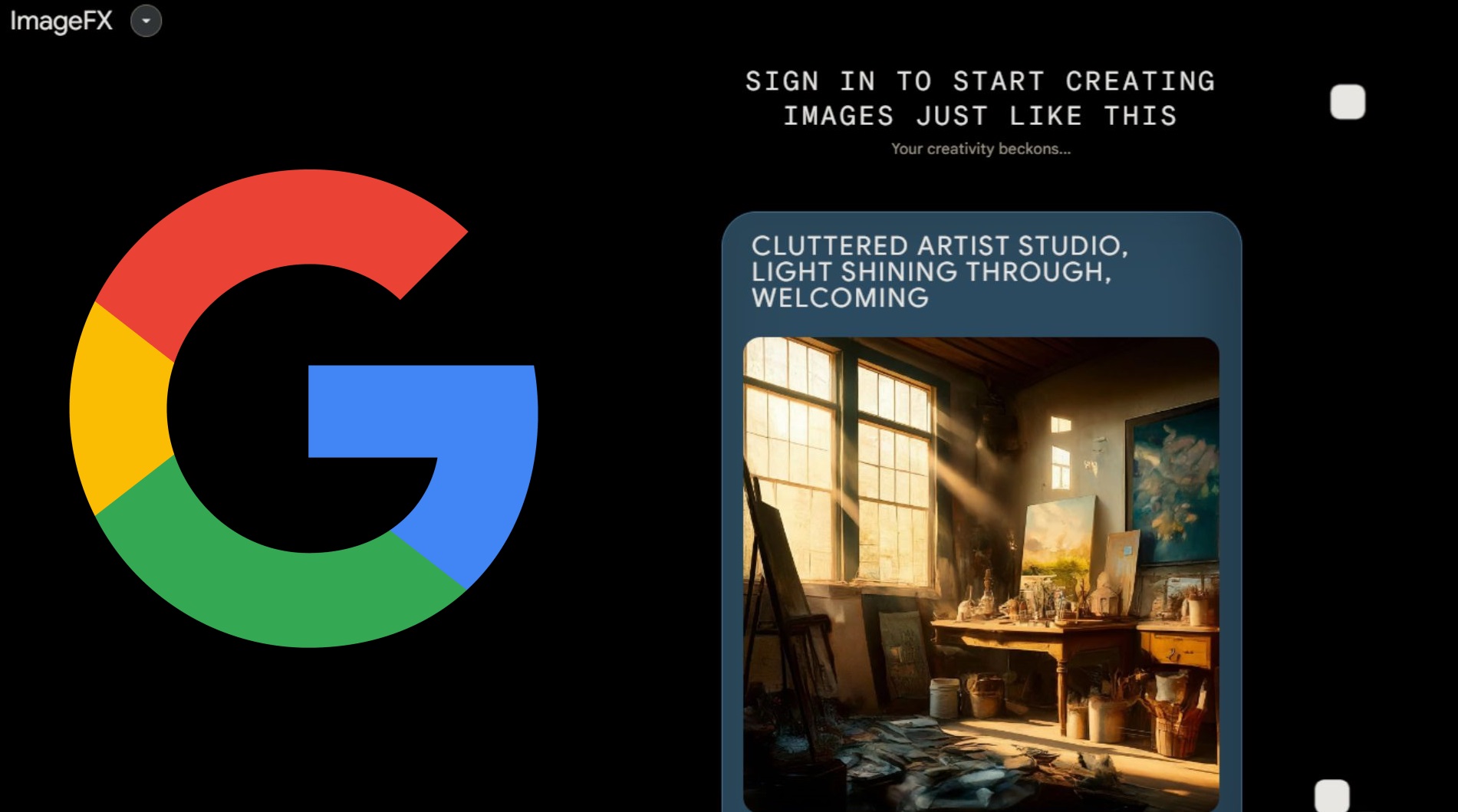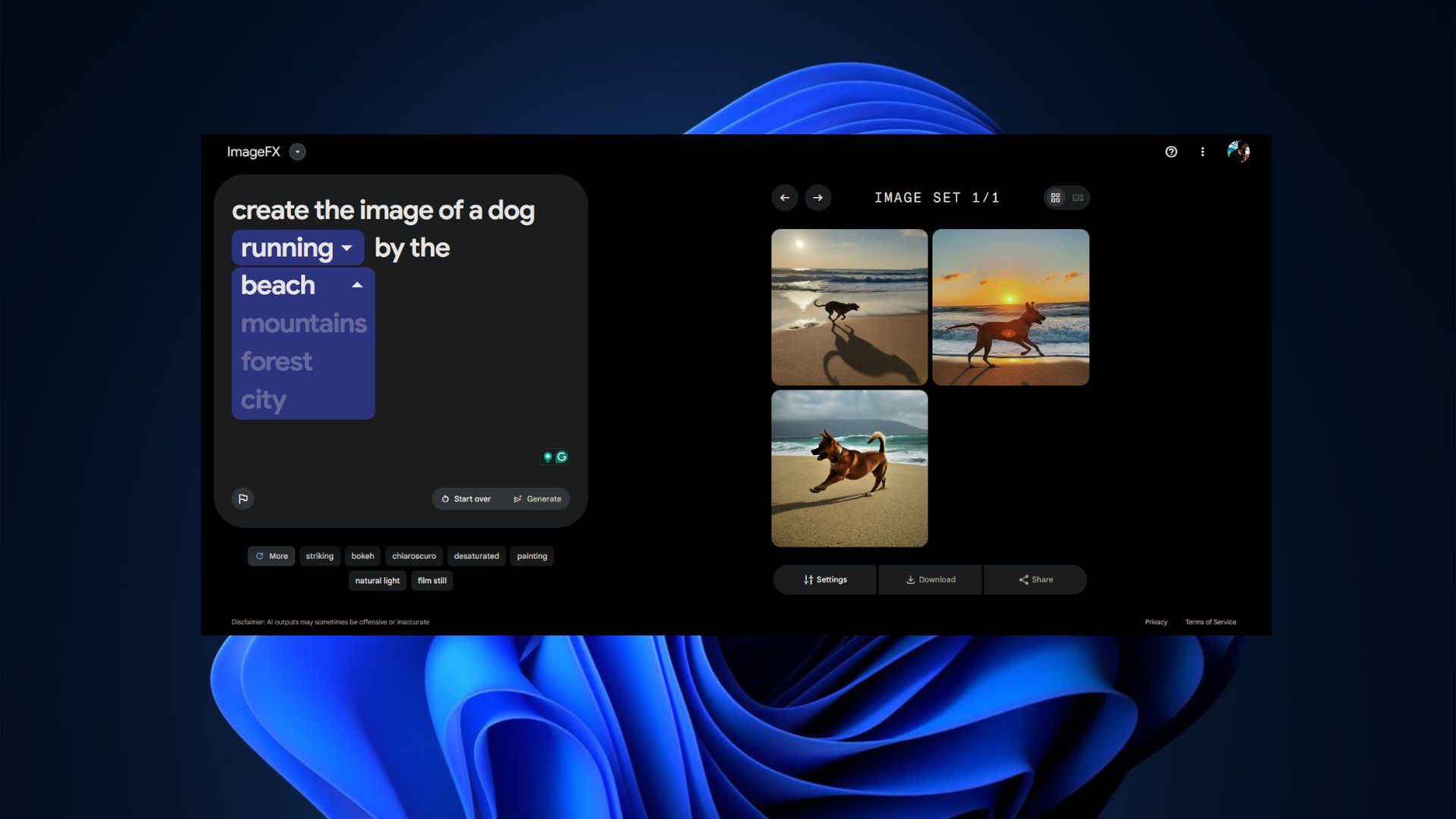Google takes on Microsoft's Image Creator from Designer with a cool tool that lets users fine-tune outputs using 'expressive chips'
Get more creative with Google's new image generation tool. Oh, you can adjust prompts to enhance further and improve the output, too.

What you need to know
- Google recently announced that Bard, ImageFX, Search, and Vertex AI will run on its updated Imagen 2 model.
- The company promises more quality and detailed AI-generated images since the model is trained on "higher-quality and image-description pairings."
- The company also debuted a new image generation tool dubbed ImageFX, which is similar to Microsoft's Image Creator from Designer.
- Interestingly, the tool lets you fine-tune your images by allowing you to alter your prompt using expressive chips.
Google is doubling its focus on AI, recently shipping its updated Imagen 2 model across Bard, ImageFX, Search, and Vertex AI. The new model places Google on an even playing field to compete against OpenAI's DALL-E 3, Midjourney, and more.
According to Google, the new model is powered by Google DeepMind's latest text-to-image advancements. What's more, it's trained on higher-quality and image-description pairings. This will allow the model to generate "more detailed images that are better aligned with the semantics of people's language prompts." As such, Google Bard will now be able to compete with Microsoft Copilot on an even playing field.
The company also unveiled an experimental image generation tool dubbed ImageFX. Like Microsoft Copilot, it generates images based on text prompts. But what sets it apart from other image-generation tools is that you can modify your prompt using expressive chips, ultimately allowing you to fine-tune the output further. Google explains that ImageFX is "designed for experimentation and creativity." Users can access the tool via Google's AI Test Kitchen, where they can also create and interact with other generative experiments such as MusicFX and TextFX.
Not your average image generation tool
I happened to test out the experimental ImageFX tool, and it's pretty neat. It's pretty fast, too; generating the image I wanted only took a split second. This is in addition to the expressive chips, which allow you to change/alter your prompt.
I tried to recreate the same image on Bing Image Creator Image Creator from Designer and noticed it was slightly slower than ImageFX. However, the images generated were pretty good. However, ImageFX looks more realistic and lifelike, in my opinion.
It's worth noting that you can also alter the text prompt on Image Creator from Microsoft Designer. Still, it's essentially giving another prompt to the tool for it to generate a new image (starting from scratch). This is why I find the expressive chips on Google's experimental tool so effective and efficient.
This is happening amid the prevalence of AI deepfakes on the internet. However, Google has embedded a link to its Privacy and Terms of Service policies on ImageFX's user interface, which broadly specifies what you can and can't do using the tool. There's an obvious need for regulation of such tools to prevent misuse.
All the latest news, reviews, and guides for Windows and Xbox diehards.
Microsoft already shipped a new update to Microsoft Designer, which is believed to be the tool used to generate sexually explicit content featuring pop star Taylor Swift. The update regulates and prevents users from generating explicit content on the platform, coupled with the newly imposed Disrupt Explicit Forged Images and Non-Consensual Edits (DEFIANCE) Act designed to regulate and prevent such occurrences.
Censorship is one of the main reasons why most users feel Image Creator by Designer has been lobotomized. I can't help but wonder what impact the newly imposed rules and regulations will have on image-generation tools and AI in general in the long run.
READ MORE: Microsoft can protect the US elections from AI deepfakes and misinformation
Elsewhere, MusicFX, Google's text-to-music tool, is also getting the expressive chips feature, which means besides creating music using prompts up to 70 seconds with the option of adjusting the tempo, you can fine-tune the lyrics based on your preference.
You can also play around with these experimental tools if you're in the US, New Zealand, Kenya, and Australia.

Kevin Okemwa is a seasoned tech journalist based in Nairobi, Kenya with lots of experience covering the latest trends and developments in the industry at Windows Central. With a passion for innovation and a keen eye for detail, he has written for leading publications such as OnMSFT, MakeUseOf, and Windows Report, providing insightful analysis and breaking news on everything revolving around the Microsoft ecosystem. While AFK and not busy following the ever-emerging trends in tech, you can find him exploring the world or listening to music.


